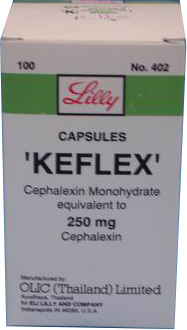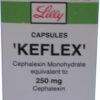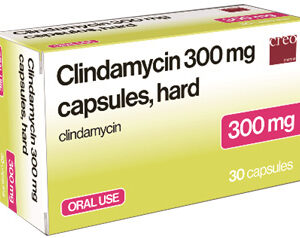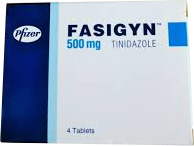Keflex is an antibiotic medication that belongs to the class of drugs known as cephalosporins. It is commonly prescribed to treat various bacterial infections, including respiratory tract infections, skin infections, urinary tract infections, and bone infections. Keflex works by inhibiting the growth of bacteria, preventing them from multiplying and causing further infection. It is available in both oral tablet and suspension forms, allowing for convenient administration to patients of different age groups. Keflex is generally well-tolerated and has been used safely for many years.
Contraindications
Keflex should not be taken by individuals with a known allergy to cephalosporin antibiotics or any other ingredients present in the formulation. It is important to inform your healthcare provider of any known allergies or hypersensitivities prior to starting treatment with Keflex. Additionally, individuals with a history of gastrointestinal disease, particularly colitis, should exercise caution when taking this medication. Consult your doctor for further evaluation and guidance if you have any concerns about potential contraindications.
Side Effects and Solutions
While Keflex is generally well-tolerated, some individuals may experience side effects. Common side effects include diarrhea, nausea, stomach pain, vomiting, and headache. These symptoms are usually mild and subside on their own without intervention. However, if persistent or severe, it is recommended to consult your healthcare provider for further evaluation and guidance. In rare cases, more serious side effects may occur, such as severe allergic reactions, liver dysfunction, or a reduction in blood cell counts. Seek immediate medical attention if you experience any such symptoms.
Administration
Keflex should be taken exactly as prescribed by your healthcare provider. It is important to finish the entire course of treatment, even if your symptoms improve before completion. The usual recommended dosage for adults is 250 to 500 milligrams taken every 6 to 12 hours, depending on the severity of the infection. For pediatric patients, the dosage is determined based on their weight. If you miss a dose, take it as soon as you remember. However, if it is close to the next scheduled dose, skip the missed dose and resume your regular dosing schedule. Taking a double dose to make up for a missed dose is not recommended. In the case of an overdose, seek immediate medical attention.
Keflex Compatibility
Keflex may interact with certain medications, thereby affecting their effectiveness or increasing the risk of side effects. Inform your healthcare provider of all medications, supplements, and herbal products you are currently taking or planning to take while on Keflex. Certain medications, such as probenecid, may increase the levels of Keflex in the blood, potentially leading to an increased risk of side effects. On the other hand, antibiotics such as tetracycline or amphenicol may decrease the effectiveness of Keflex. It is important to discuss potential interactions with your healthcare provider to ensure the safe and effective use of Keflex.
Common Questions
-
Can Keflex be taken during pregnancy?
Keflex is generally considered safe to use during pregnancy when the potential benefits outweigh the potential risks. However, it is important to discuss with your obstetrician or healthcare provider before starting any medication during pregnancy.
-
Can Keflex be taken while breastfeeding?
Keflex is excreted in small amounts into breast milk. While it is generally considered safe to use during breastfeeding, it is recommended to consult with your healthcare provider for individualized advice.
-
Does Keflex interact with hormonal contraceptives?
Keflex does not interfere with the effectiveness of hormonal contraceptives such as birth control pills. However, it is always advised to use additional contraceptive methods, such as condoms, during antibiotic treatment to further prevent unintended pregnancies.
-
Can Keflex be used to treat viral infections?
No, Keflex is an antibiotic specifically designed to treat bacterial infections. It is not effective against viral infections such as the common cold or flu. It is important to use Keflex only as prescribed by your healthcare provider.
-
How long does it take for Keflex to start working?
The onset of action of Keflex varies depending on the specific infection being treated. However, many individuals notice an improvement in their symptoms within a few days of starting treatment. It is important to complete the full course of treatment as prescribed, even if symptoms improve before completion, to ensure the eradication of the infection.






Reviews
There are no reviews yet.